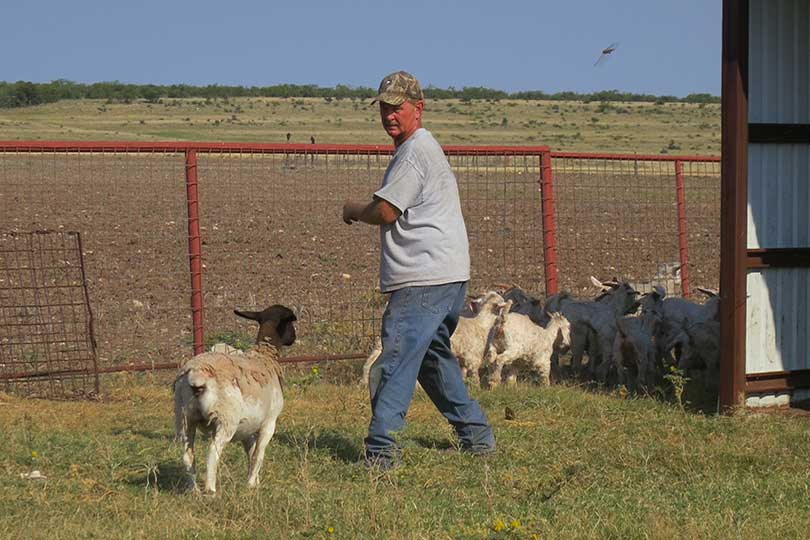By Shala Watson
Multimedia Writer
Livestock predation is a concern for farmers and ranchers. Coyotes and bobcats threaten the success of many sheep and goat operations.
An influx of absentee landowners in Concho County is also fueling the problem. About 75 percent of landowners in Concho County are absentee landowners.
Concho County angora sheep and goat producer Gary Speck has been battling predation for several years. Despite his efforts, the problem is growing.
“Predation is the largest reason sheep and goat raisers go out of business,” Speck told the Texas Farm Bureau Radio Network. “If you can’t raise anything to sell, you just have to go out of business.”
Speck’s land is spread across three different locations within the county, and he said some areas are affected more than others.
“I have one place that the last few years I’ve had like 150 ewes on and I’ve raised about 20 percent lamb crop,” Speck said.
Adult animals are more vulnerable in late July and August when the coyotes are teaching their pups to kill, but kids and lambs are vulnerable all year long.
“The lambs and kids disappear, and you never find evidence that they have even been there,” Speck said.
There are several methods—guard animals, fences and county trappers—that landowners can use to slow livestock predators.
“We do have two trappers in our county that are government trappers,” Speck said. “They do their best and they have caught quite a few coyotes, but it seems like they move in as fast as you catch them.”
He said guard dogs are effective, but they are the most expensive guard animal you can have.
“You have to have your place set up just right for them to work,” Speck said. “Some people’s fences aren’t good enough.”
He has used llamas in smaller pastures as another method of defense with some degree of success.
“Donkeys are another guard animal that some people use, but still it’s not enough to keep the coyote population down,” Speck said.
Speck believes education is key to help absentee landowners become more aware of the predation problem and help reduce livestock losses.
“Education is a big part of what we need to do,” Speck said. “A lot of the land is sold for hunting and that turns a lot of people’s attention a little different way. They understand why we need to work on the coyote population.”
Most absentee landowners have understood the problem and have been very agreeable, according to Speck.
Click here to listen to the full interview with Speck on the TFB Radio Network.

